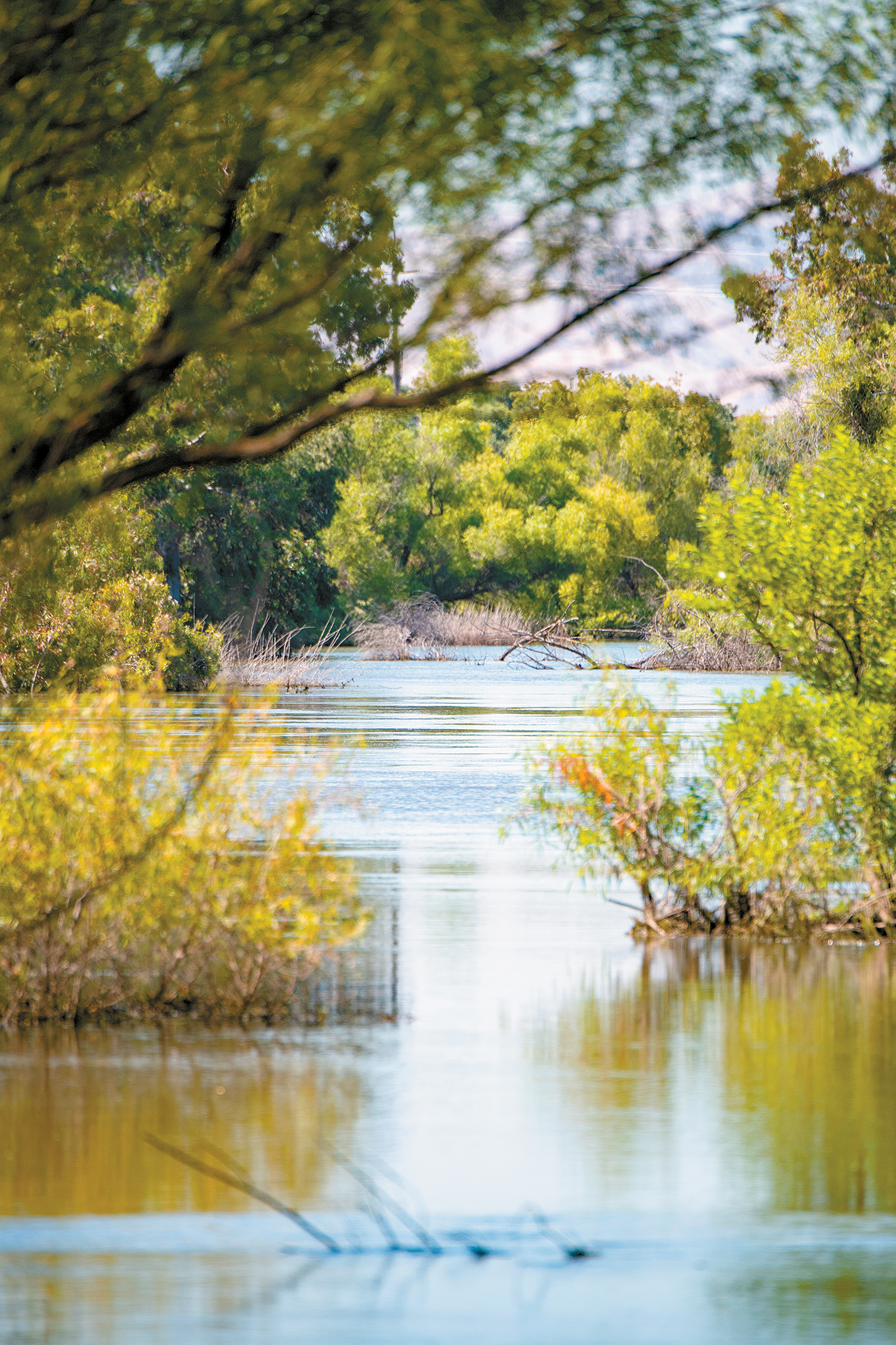Farmers, water districts to weigh in on flows plan

High water following 2023 storms flows in the San Joaquin River in Manteca in June. California water officials are seeking comments, including input from farmers, on a draft environmental report to evaluate voluntary-agreement approaches for targeted flows to help fish and restore habitat.
Photo/California Department of Water Resources

By Christine Souza
California water officials are working on an updated plan to improve conditions for declining fish populations in the Sacramento-San Joaquin Delta.
The state is also seeking input from farmers, water districts, environmentalists and other water interests on a water-quality control plan for the delta and the San Francisco Bay. As part of a legally required process, the California State Water Resources Control Board is accepting public comments related to a Sept. 28 draft environmental report by staff that evaluates approaches under consideration.
The draft report evaluates strategies that set minimum amounts of unimpaired flow of water in rivers and tributaries that would require water users to cut usage. It also analyzes a voluntary-agreement approach that recommends targeted flows be paired with habitat restoration, scientific monitoring and hundreds of millions of dollars for implementation.
“Restoring flows is critical, and the voluntary agreements propose to do that in all water year types,” California Natural Resources Secretary Wade Crowfoot told board members last week during a third public hearing on the draft report.
“We have scientists that have made a clear case that those improved flows, in addition to habitat, scientific monitoring and adaptive management, will be sufficient to move toward recovery of the species,” Crowfoot said.
Voluntary agreements, which received early support from Gov. Gavin Newsom, propose to restore and maintain tens of thousands of acres of habitat in the Sacramento and San Joaquin rivers that feed into the delta.
Early implementation of voluntary agreements is happening, Crowfoot said, with a few dozen habitat projects either complete or almost complete, with more projects in the planning stages.
“The state government has identified over $1 billion of improvements—habitat improvements and environmental flow purchases—that would be part of the voluntary agreements that will provide environmental benefit regardless of the water board’s approach,” he said.
Some districts, farmers and residents have protested the unimpaired flows approach, saying it would do little to restore salmon and other fish populations, while cutting water supplies and causing economic harm to affected communities.
Alexandra Biering, California Farm Bureau senior policy advocate, said under the unimpaired flows alternative, “in most years, an average year looks like the eight drought years we’ve had in the last decade, which is really devastating.”
Biering said many state water users, districts and others support the comprehensive approach proposed in voluntary agreements known as the Healthy Rivers and Landscapes Program.
“California’s economy is one of the largest in the world, and much of that is predicated on the availability and use of water supplies that we can move around the state,” Biering said. “When you kneecap that resource input and prevent it from being available, there is no way to maintain that sort of standing.”
The San Luis & Delta-Mendota Water Authority represents 27 member agencies that provide water to about 2.5 million Californians and more than 1.2 million acres of irrigated agriculture. Scott Peterson, the authority’s water policy director, said the unimpaired flows approach would result in a 250,000 acre-feet reduction of water.
Peterson said that would mean “significant negative impacts to communities, farms and ecosystems.”
In discussing potential food-security impacts, Peterson cited a 2022 economic analysis of Wetlands Water District by Pepperdine University that found a striking correlation between water supply and poverty in Fresno and Kings counties.
“When the water district receives little to no water, poverty levels increase, and when the district receives a higher water allocation, economic stability in that region improves,” he said. “The communities in the San Joaquin Valley are more economically disadvantaged than the rest of California, and they’re disproportionately impacted by water-supply reductions.”
Alicia Rockwell, chief government affairs officer for Blue Diamond Growers, a member-owned agricultural cooperative representing state almond growers, spoke in support of the voluntary-agreements approach.
“We believe the voluntary-agreements alternative emerges as a more promising option for achieving a balanced and sustainable water management strategy,” Rockwell said. “These agreements encourage stakeholders to work together to find solutions that accommodate both environmental needs and the requirements of the agricultural sector.”
Rockwell said a Healthy Rivers and Landscapes proposal promotes innovation and investment. “Participants, including farmers and environmental advocates, are more likely to invest in modern and efficient water technologies when they’re actively engaged in the decision-making process,” she said.
Andy Fecko, general manager of the Placer County Water Agency, who also represents the Regional Water Authority, said the voluntary agreements represent about a decade of work. Because “much of California’s ecosystem is driven by a drought-flood cycle,” he told the board he is concerned with managing water in such an uncertain environment.
“How do you manage around that?” asked Fecko, who called for an adaptive management approach. “This is precisely why we’ve tried to build in both the flexibility and the assets, and the science and governance, to make real-time decisions.”
Northern California Water Association President David Guy said there is a need to combine flows with function to help the ecosystem. “There is a real opportunity here to reimagine our infrastructure in combination with flows,” Guy said.
As the state works to update the Bay-Delta plan, about a dozen lawsuits that challenge the state’s 2018 unimpaired flows plan for the San Joaquin River tributaries (Stanislaus, Tuolumne and Merced rivers) are pending in Sacramento County Superior Court.
The cases include a lawsuit brought by the California Farm Bureau that challenges the plan’s adoption and argues the state’s environmental review document underestimates the harm the plan would cause to Central Valley agriculture.
“In the name of water quality, we’re trying to clamp down entire river systems that have a lot of vested and important and productive human uses of water that have been a feature of California law and policy and history for 150 years,” said Chris Scheuring, senior counsel for the California Farm Bureau, about the pending state water board decision.
“Anything that sets aside implementation of the hard path in favor of a more holistic look at the other stressors and reasons for fish-population declines is something we’ve been talking about for years,” Scheuring said.
Legal arguments were heard this past fall in Sacramento County Superior Court. Scheuring said he anticipates the judge may rule on the matter in January.
After evaluating public feedback on the draft report and peer review input on the science report findings on proposed voluntary agreements, state water board staff could incorporate any changes and release draft plan amendments for public review and comment in early to mid-2024.
To learn more or submit written comments on the draft staff report by Jan. 19, visit www.waterboards.ca.gov/waterrights/water_issues/programs/bay_delta/.
(Christine Souza is an assistant editor of Ag Alert. She may be contacted at csouza@cfbf.com.)




